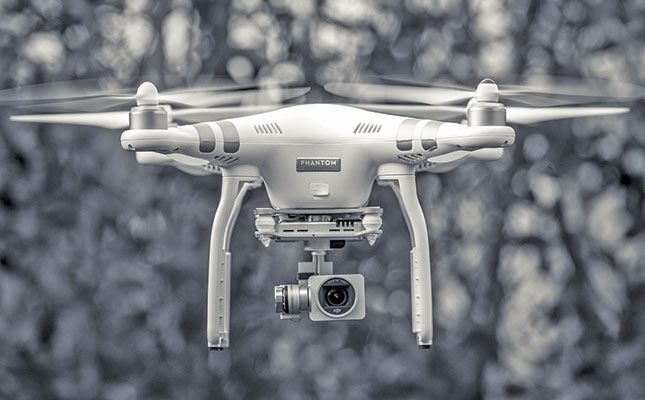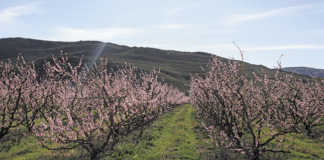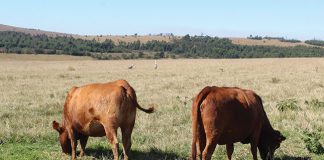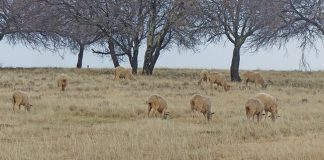
Photo: Pixabay
An aircraft with no pilot on board, or an unmanned aerial vehicle, is commonly known by its acronym, UAV, or by the word ‘drone’. The latter term was first used in the 1930s by developers of radio-controlled aeroplanes used as targets to help train anti-aircraft gunners.
A UAV can be a remote-controlled aircraft flown by a ground-based pilot, or an aircraft that flies autonomously based on a preprogrammed flight plan or a dynamic automation system.
The term ‘unmanned aircraft system’ (UAS) was introduced to reflect the fact that these complex systems include ground stations and other elements in addition to the actual aircraft. ‘UAS’, however, is not widely used, as UAV has become part of the modern lexicon.
What exactly is a drone?
Many members of the public have a negative perception of drones, as they associate the word with military attack drones. Yet a drone should be seen for what it is: simply an aircraft without a pilot, and it has enormous potential for good that is only beginning to be appreciated. Today’s drones are used in a huge and growing variety of roles, many of them highly beneficial.
Nonetheless, it is true that, as with so many inventions, drones came about as a military tool. Radio-controlled aircraft were first tested at the end of the First World War, and, as already mentioned, improved during the inter-war years, when they became known as drones.
Development continued during the Second World War, the Cold War, and more recently wars and conflicts in Vietnam, Iraq, Syria and Palestine. Today, drones are being used extensively by both sides in the Russia-Ukraine war.
Drones for civilian use began to appear in the 21st century, and with leaps and bounds in technology, and a drop in prices, the machines began to go mainstream.
Today, the most common payload is a camera, which can include options such as infrared and heat sensors depending on the use of the drone. A close second is GPS equipment to map the terrain and help the user identify man-made or geological structures. The payload can be expanded to include emergency resources, tools and equipment.
Drones already perform mundane and dangerous tasks, deliver medicine and supplies to remote, inaccessible areas, carry out search-and-rescue missions, and much more. The future undoubtedly holds many additional uses for these machines.
As many farmers around the world will attest, drones are proving their worth as a multi-purpose tool. Combined with the appropriate sensors, for example, they are used to analyse plant health and detect soil erosion, as well as for spraying fertiliser, herbicide and pesticide.
Here in South Africa, where producers are exposed to ongoing stock theft and violent criminals, drones offer a practical, affordable method of increasing on-farm security..
Legal restrictions/limitations
Earlier this year, the laws governing the legal operation of remote-control aircraft and remote-piloted aerial systems were changed in South Africa, introducing a framework for where and how drones can be flown, and who is allowed to fly them.
In general, these new restrictions and regulations don’t apply to the type of quadcopters that are popular as gifts, or if you’re flying a drone for fun. However, you should be aware that these drones are banned in certain areas and also have height restrictions; for example, they cannot be used within 10km of an airport or 50m of a building or road, and cannot be flown higher than 120m.
Also, a hobby drone must be flown within line of sight, which automatically means that you cannot fly one at night either. For commercial purposes, the regulations get a bit more complicated. In this case, you will need to register your drone with the South African Civil Aviation Authority (CAA), providing documents such as an operations manual.
The first task for anyone wishing to fly a drone for commercial purposes is to acquire a remote pilot’s licence (RPL). It is estimated that to obtain an RPL, with all the related expenses, will cost an individual around R45 000.
Use in crime prevention
A drone is not a silver bullet against crime. However, it can be a valuable tool, provided that:
- It is the correct type of drone, with the correct camera lens and technical specification;
- The drone has a reliable power supply;
- The recording and evidence retention equipment is of good quality and has appropriate technical specifications;
- The recording retention period is adequate;
- The recording equipment is securely locked up, and backup data is kept off site, if possible;
- A secure and reliable communication system is in place, both on- and off site.
More issues to consider
Prospective drone users have to ensure that the system they choose is cost-effective and good value for money. Should you buy or lease, for example? Leasing will often include a redundancy provision.
Before spending your money, do your homework, look at reviews, and aim for a good-quality drone that will meet your needs. In addition, evaluate the way in which the company management and staff respond to your enquiry. The way they work now is likely to be an indicator of the work ethic that you can expect from them in the future!
Is the management involved and interested in helping you find the best solution to your problem, or do you only see sales personnel interacting with you? You also have to decide whether you will operate the drone yourself, or whether you’d rather employ a professional operator to provide the required service.
Securing your farm
Let us assume that all the above has been applied and your equipment is up and running and on standby to become operational. Before employing a drone for security purposes, you need to establish where exactly your security perimeter is:
- Is it the outer walls of your house, doors (fitted with security gates) and windows (fitted with burglar bars)?
- Is it the security fence around the garden and house, with its razor wire, alarm beams and closed-circuit TV?
- Is it the security fence around the farm buildings, sheds, house, and so on, again with razor wire, beams and closed-circuit TV?
- A drone will effectively enable you to extend your perimeter by 500m, 1km or even further out, proving greater security and increasing your reaction time.
Patrolling with a drone
The drone can be deployed to help secure your farm, livestock, implements and infrastructure. Here are some of the ways in which you can achieve this:
- Perform routine patrols along identified routes, and identify and log vehicles and pedestrians within an identified area;
- Count and account for farm animals;
- Locate and validate working implements, and the status and condition of infrastructure;
- Locate and log unauthorised persons or vehicles in restricted areas;
- Provide clear instructions to any security staff, and stay in touch with them at all times.
In the event of an incident, do your best to identify a fleeing vehicle or persons escaping the scene. A drone can, of course, be a vital aid for professional security practitioners, and is already being used for this purpose. Of course, any team-based security system that uses drones will need to ensure a well-organised response. Here are some pointers in this regard:
- Develop a detailed deployment plan, indicating the objectives and desired results required from the drone system. This plan should include operating parameters and the budget required to ensure that system can be sustained for the benefit of the community;
- Control and coordinate the security response effort and teams deployed in the area;
- Identify and coordinate additional resources to successfully counter and mitigate any emergency situation.
The future and the law
The development of UAV technology has opened up multiple possibilities, enabling people to plan for and respond to the challenges of security in the rural farming areas of South Africa.
Let us trust that the regulatory bodies will be progressive enough in their approach to permit the judicious and responsible use of UAV technology for the benefit of all citizens in future.
Email Laurence Palmer at [email protected].












